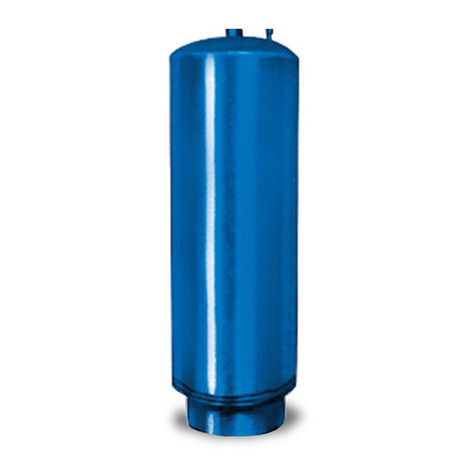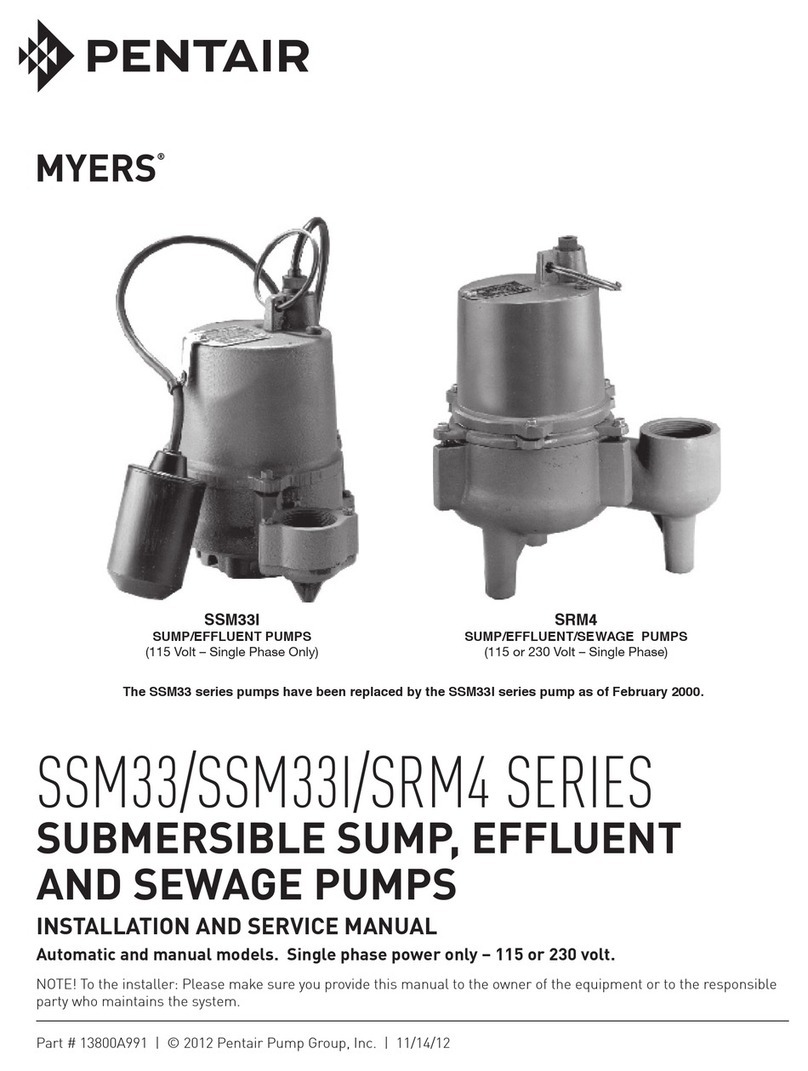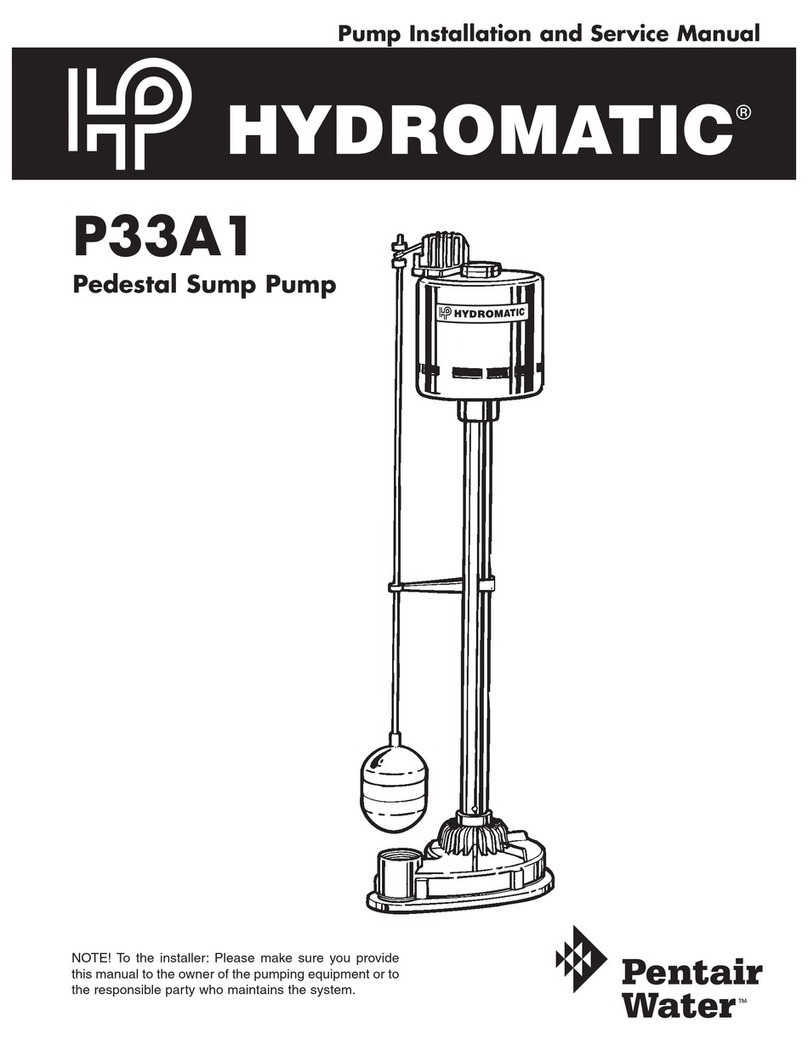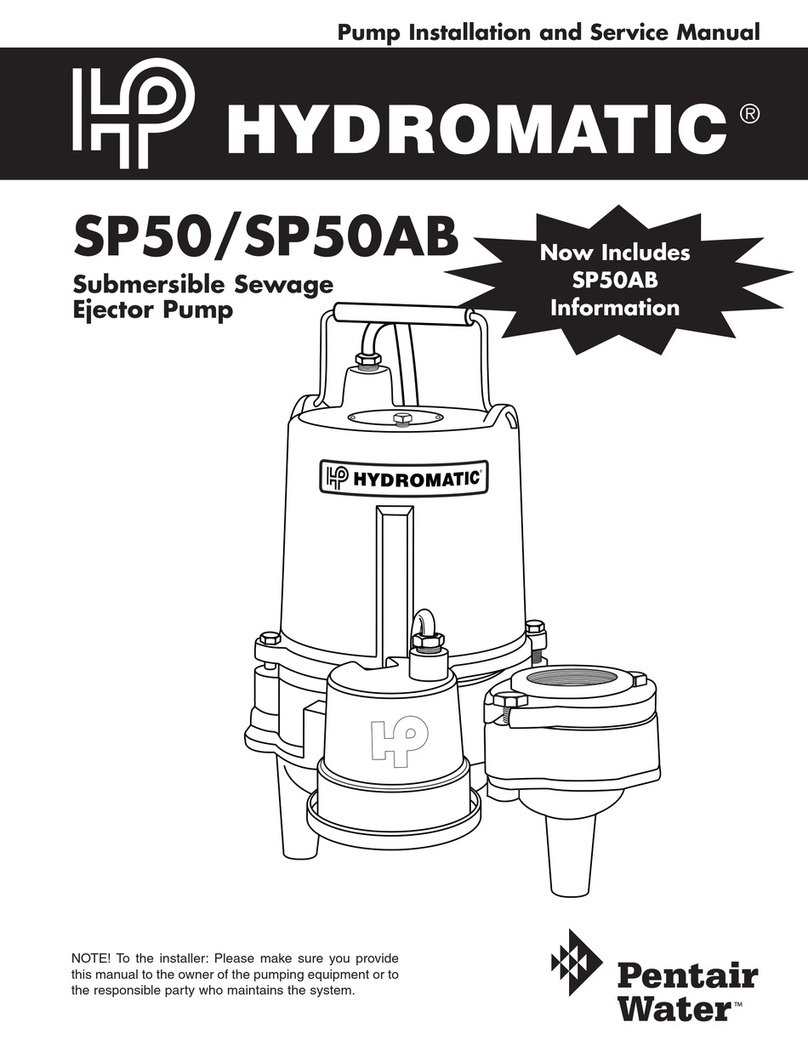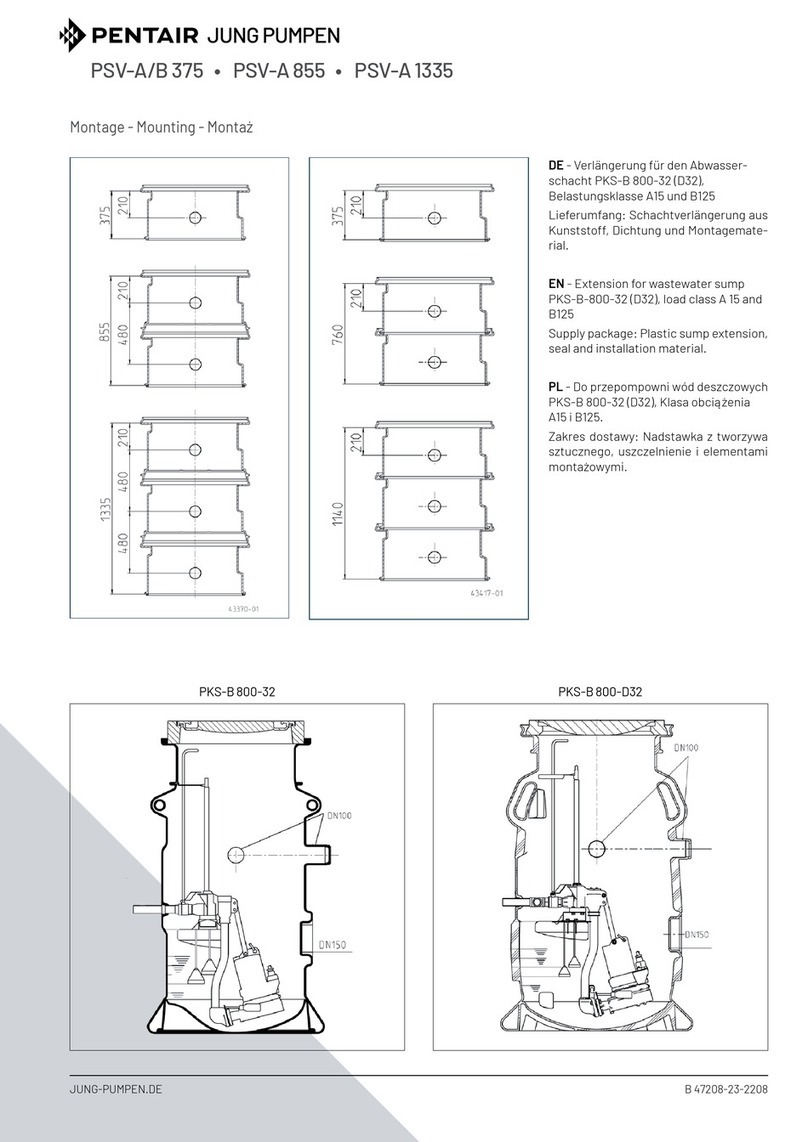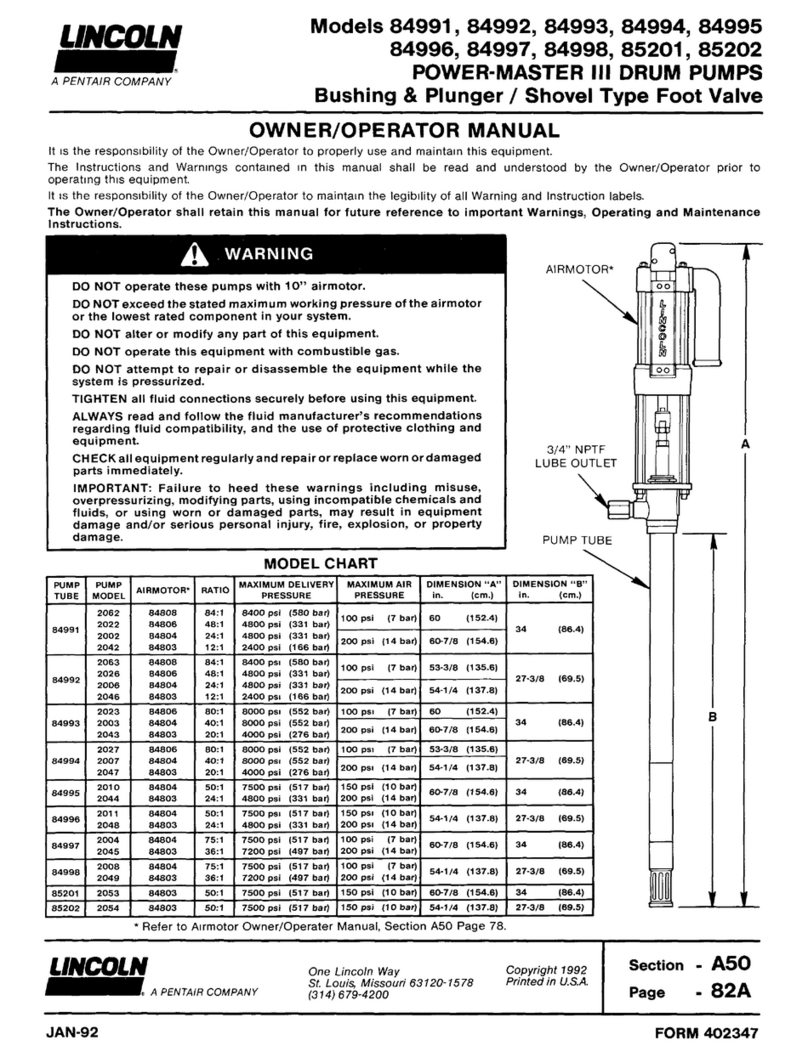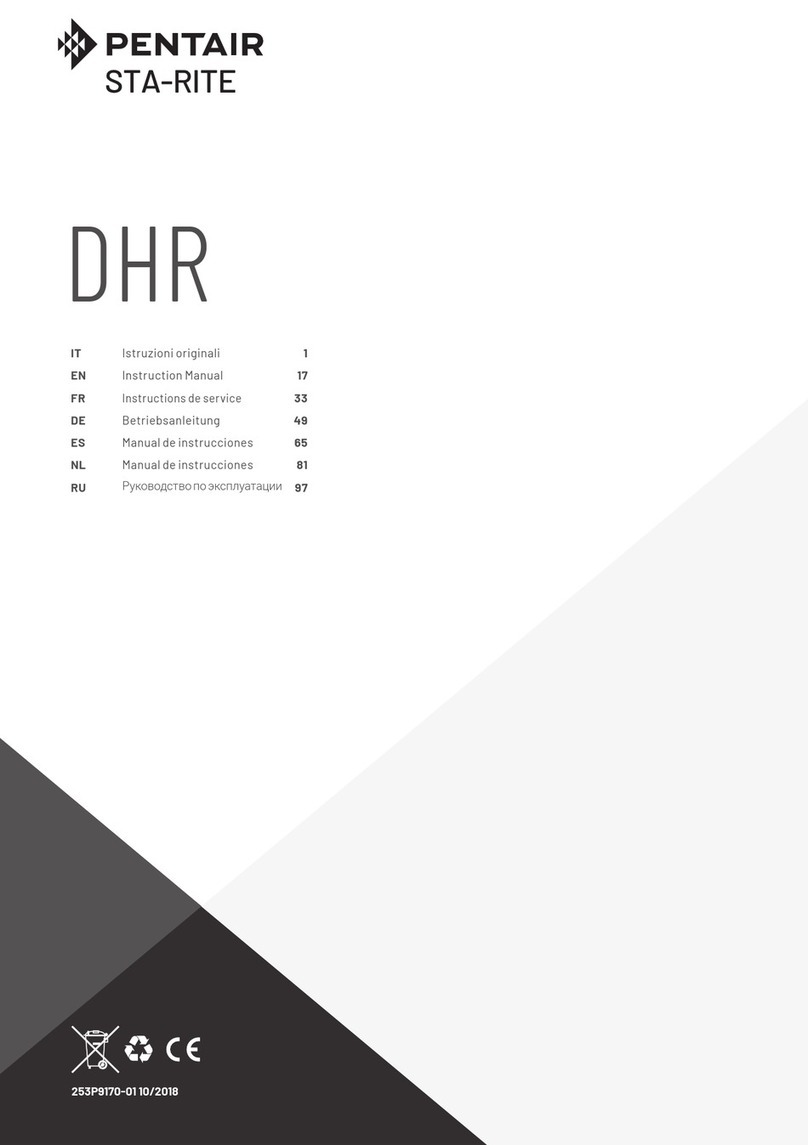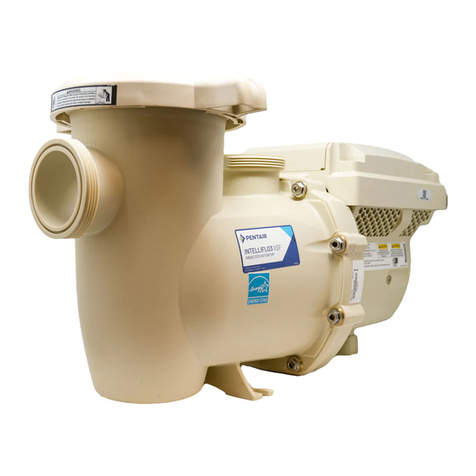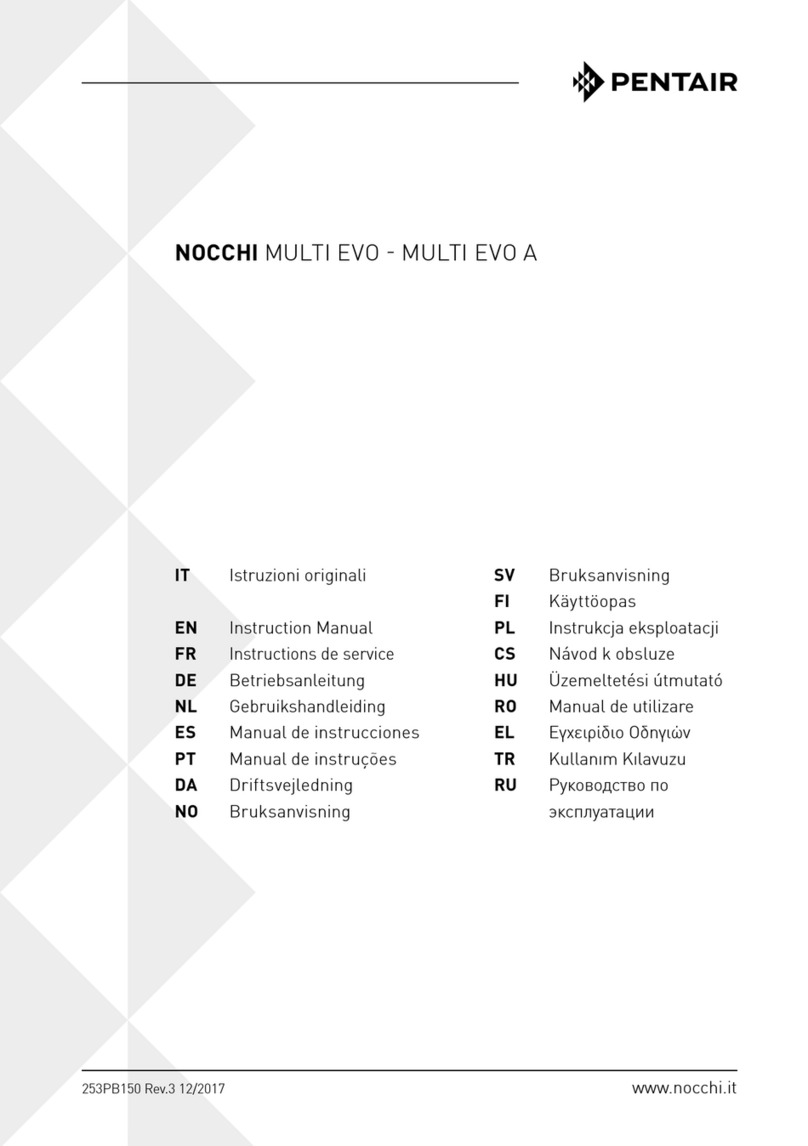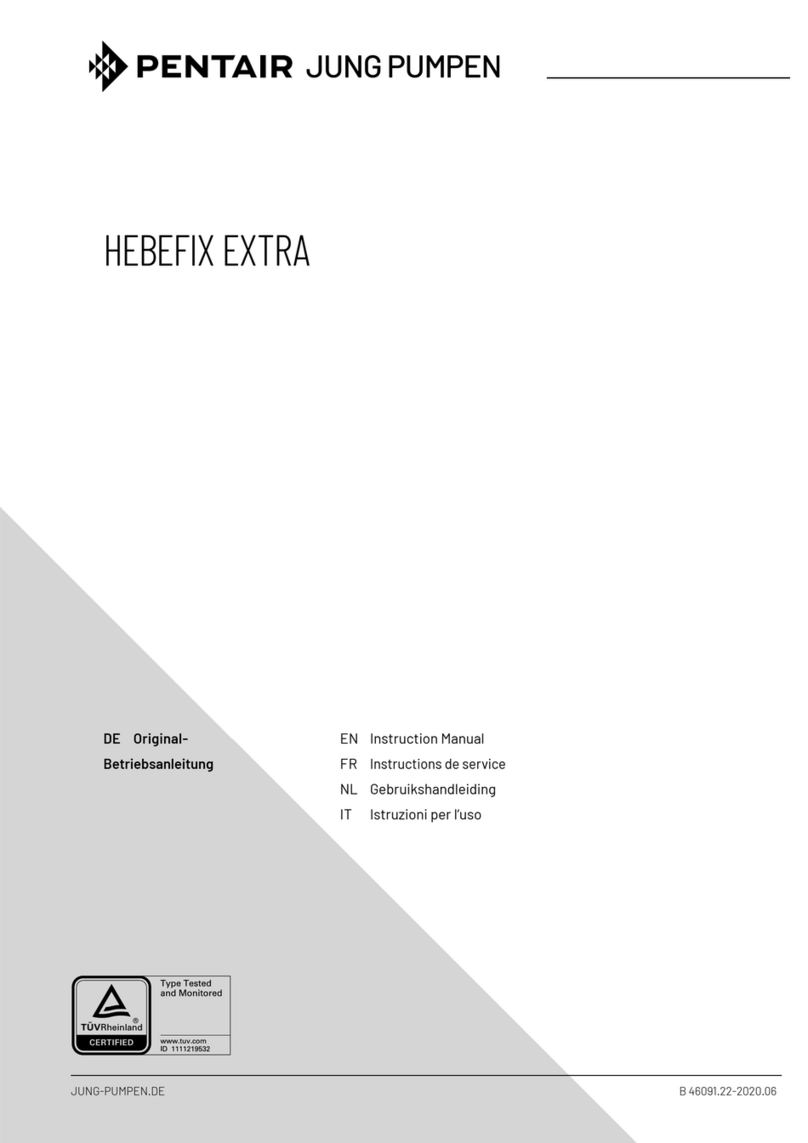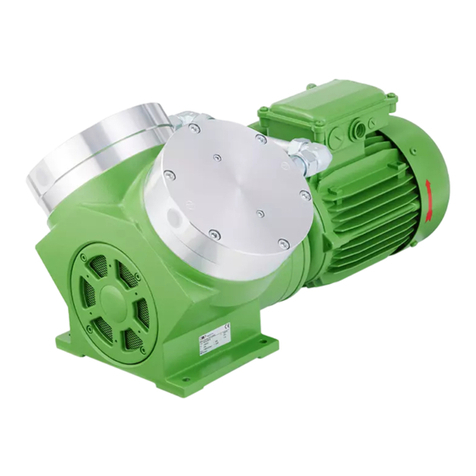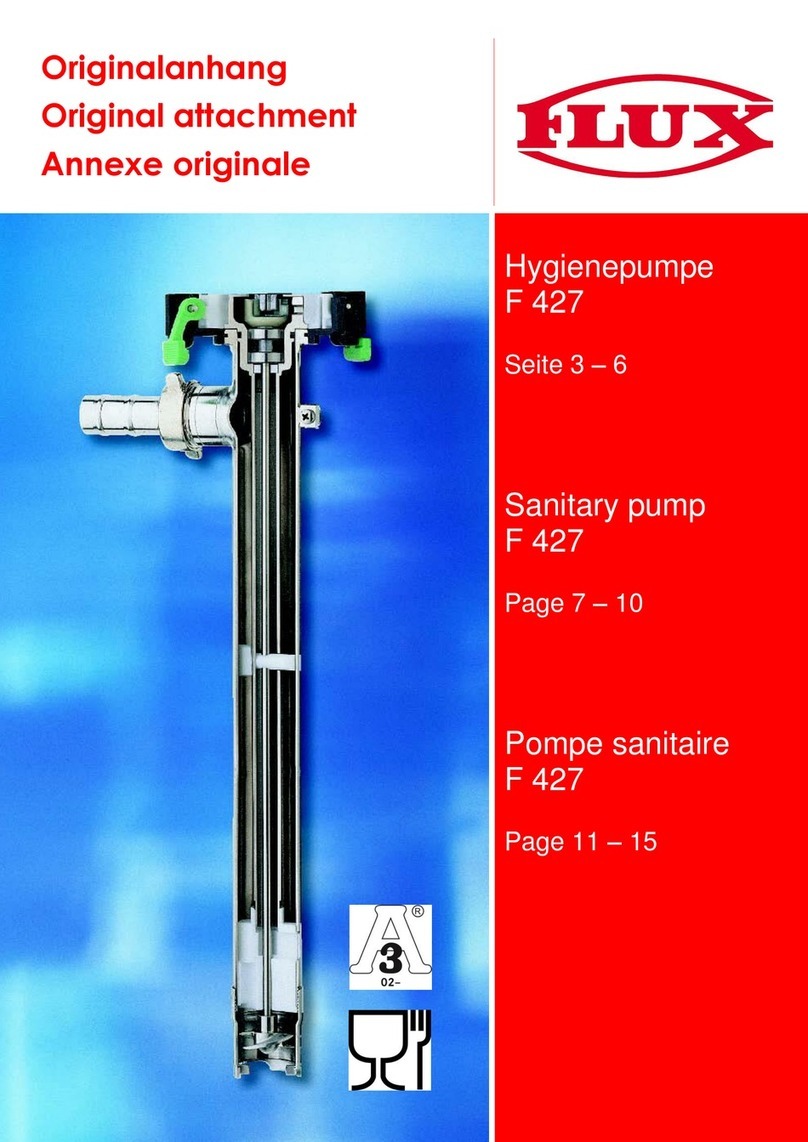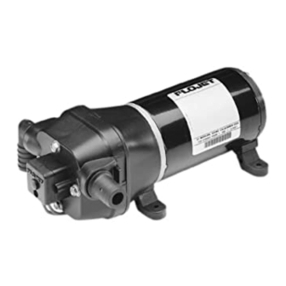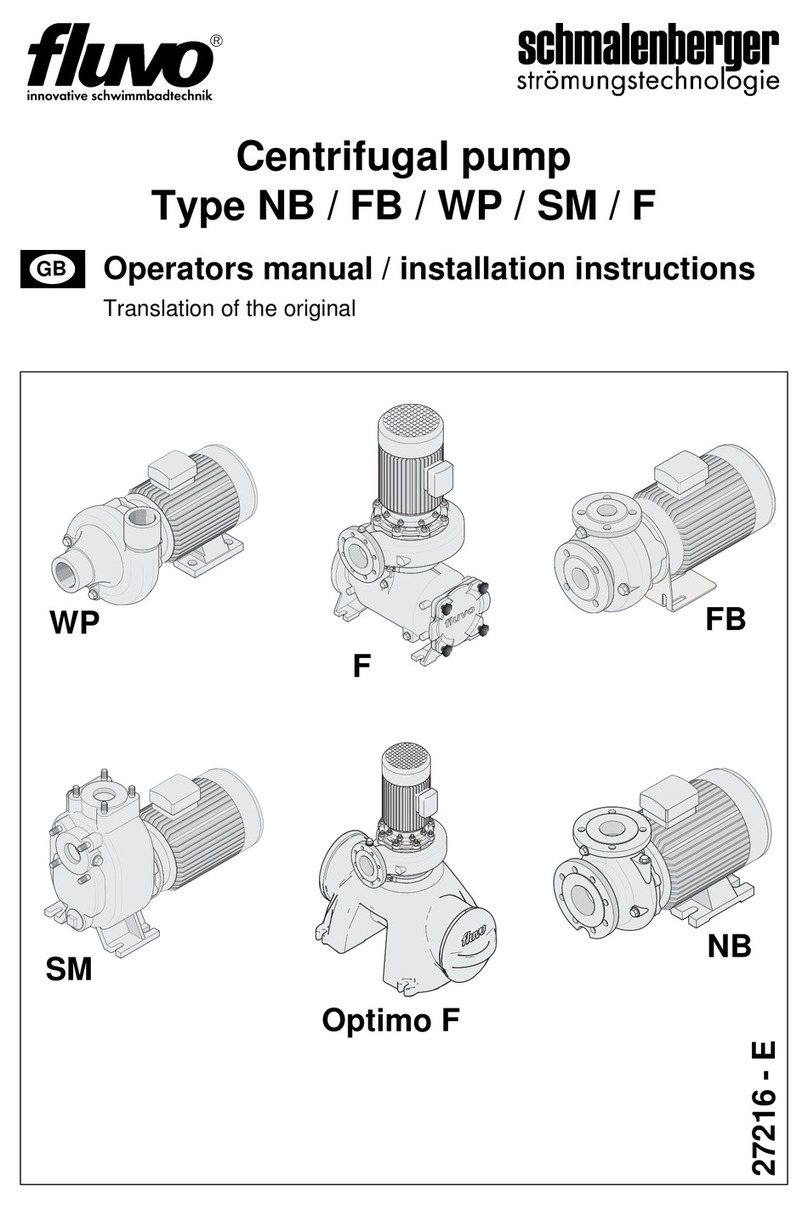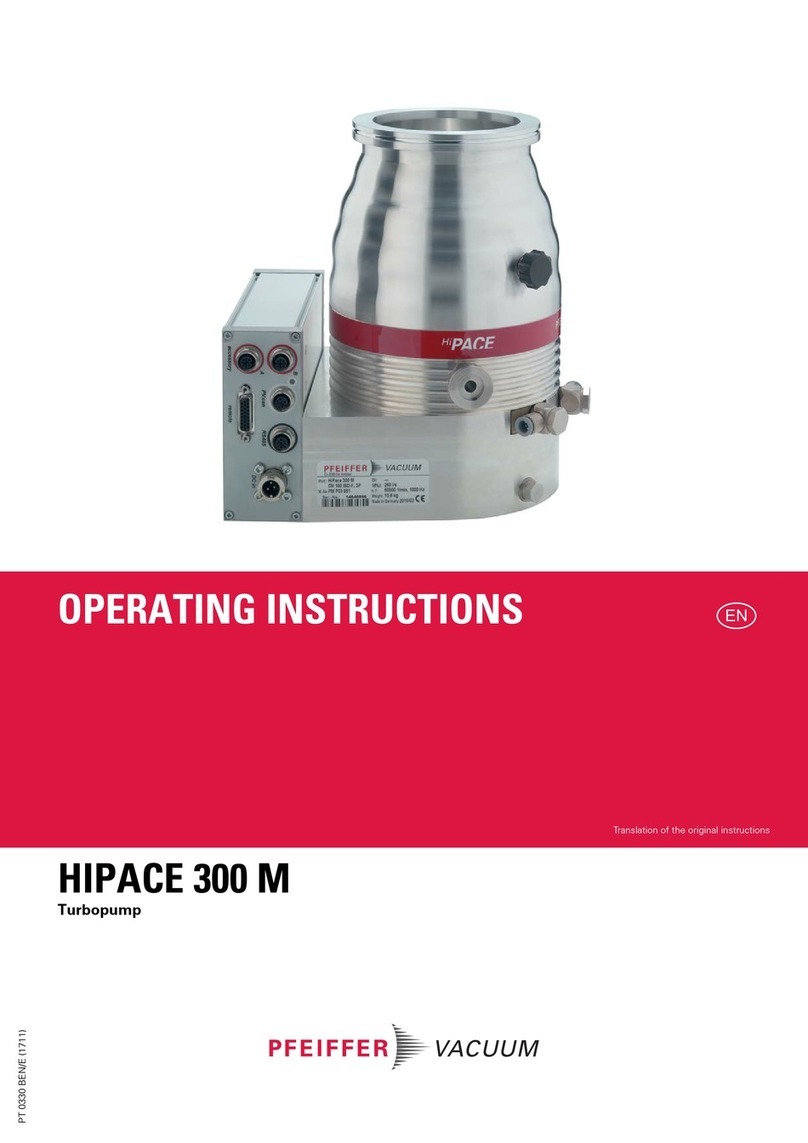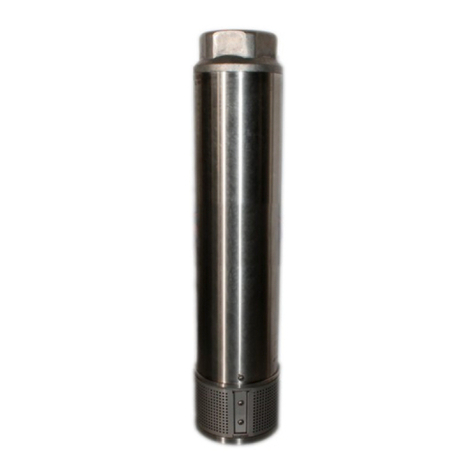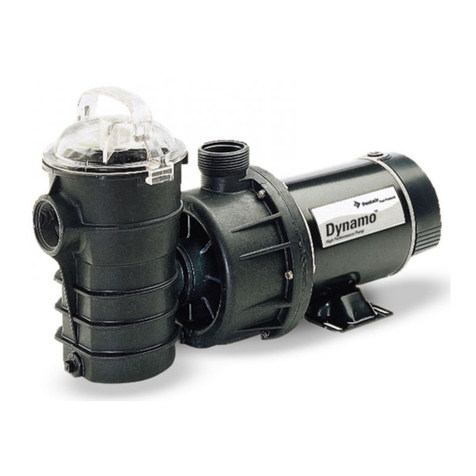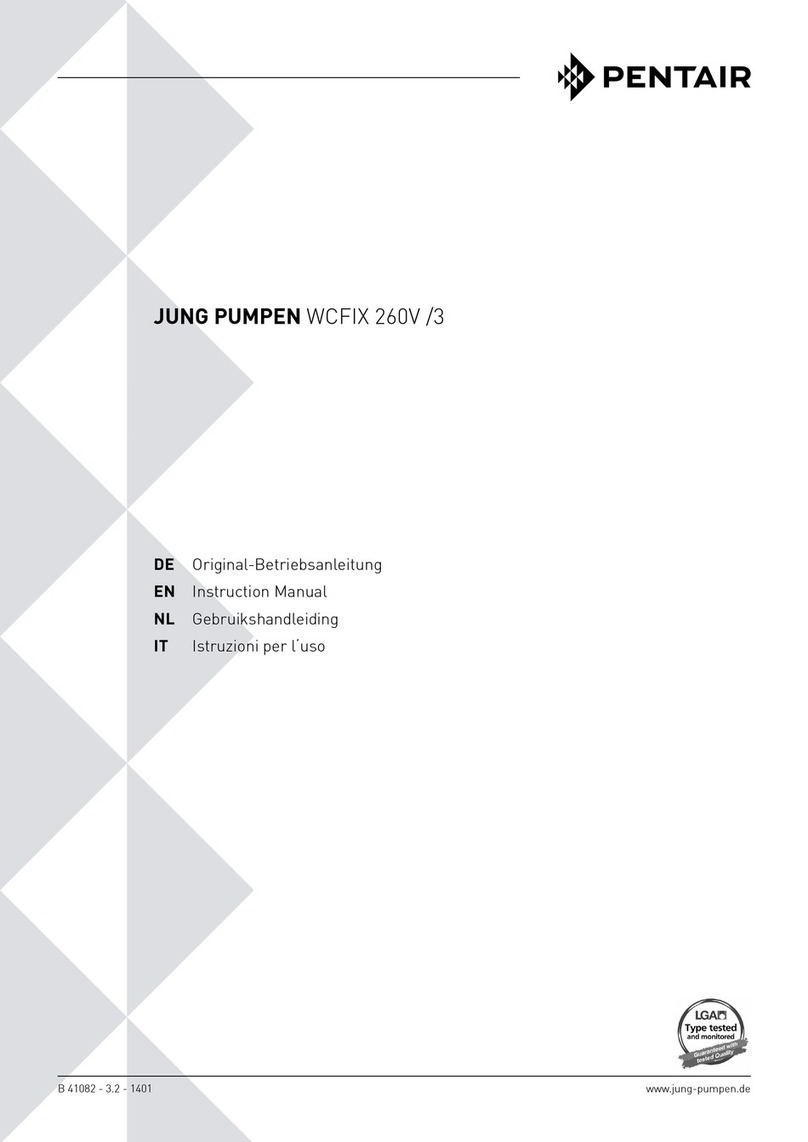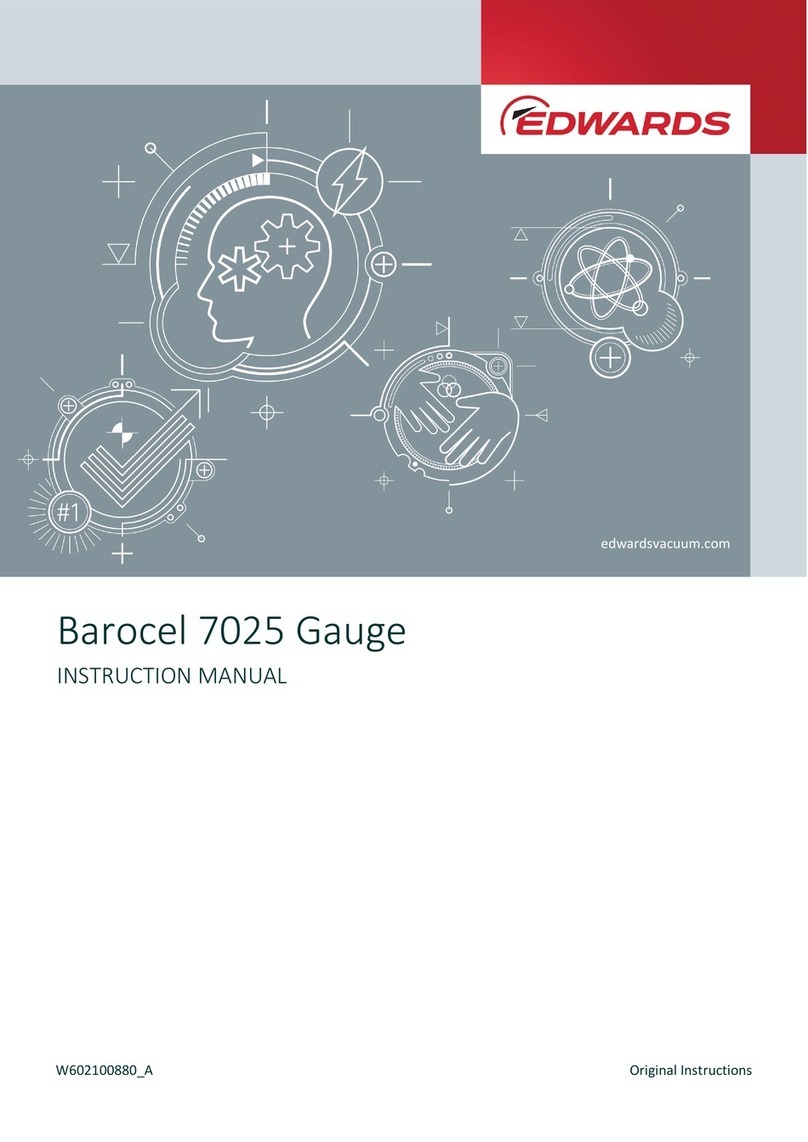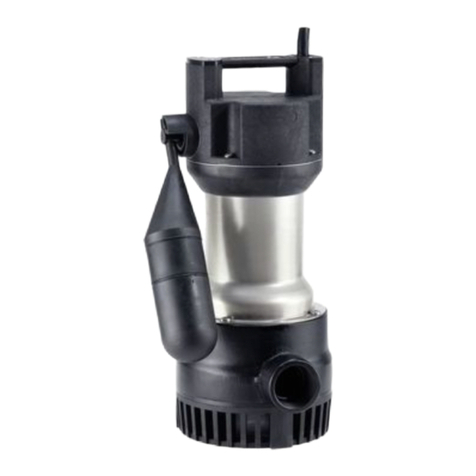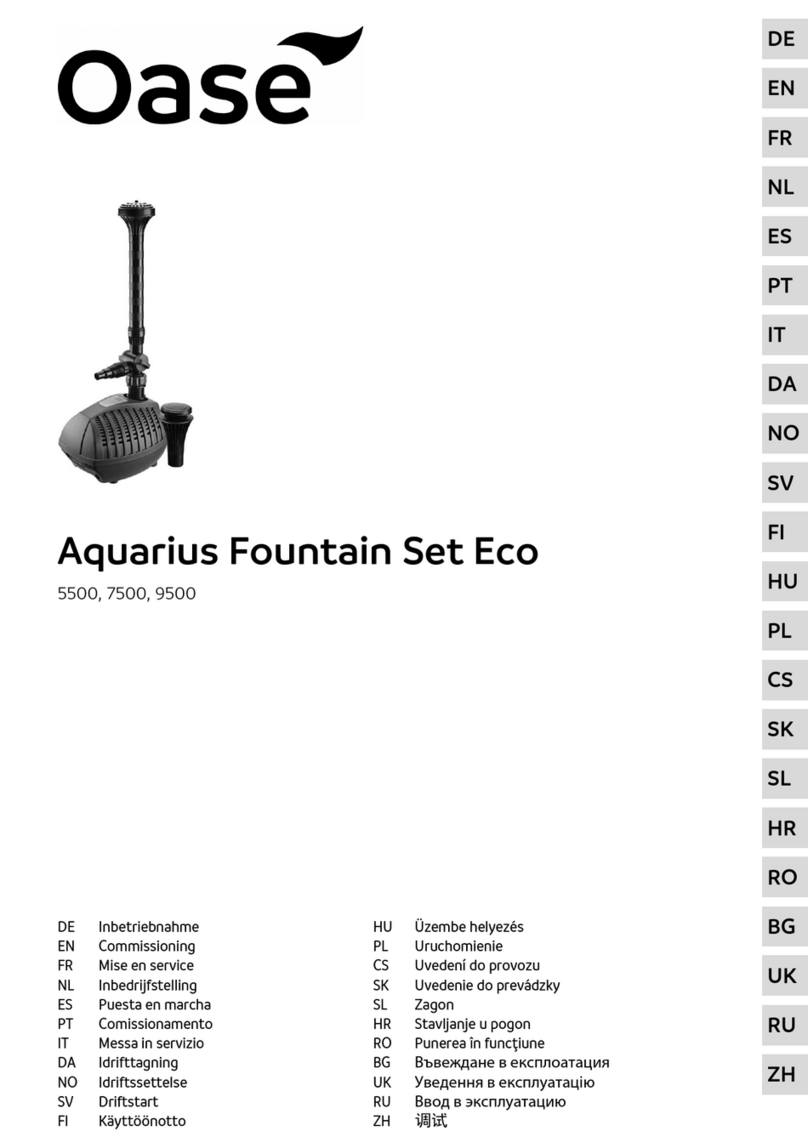
7
Pump and driver should be located in an area that will
permit periodic inspection and maintenance. Head and
access room should be provided and all units should be
installed in a dry location with adequate drainage.
Foundation
Pump foundations should have a level surface and be of
sufficient mass to prevent vibration and form a permanent
rigid support. The most satisfactory foundations are
concrete with anchor bolts of adequate size imbedded in the
foundation in pipe sleeves with an inside diameter
2-1/2 times larger than the bolt diameter which will allow for
final accurate positioning of the unit. Recommended anchor
bolt design is available from the factory.
INSTALLATION
General
Crushing hazard if pump drops. Use
appropriate lifting equipment to raise the pump. Do not try to
pick up the complete unit by the driver eye bolts or a pump
shaft eyebolt. The bolts may fail and drop the pump.
NOTICE: Pump and driver alignment should be checked
throughout the piping and grouting procedures. Once piping
connections have been made and grouting completed,
alignment corrections are difficult.
Grouting
When alignment is correct, the unit should be grouted using
a high grade non-shrinking grout. The base is designed to
be completely filled with grout.
NOTICE: Damaging vibration may result if the baseplate is
not solidly in contact with the grout bed.
Do not fill the anchor bolt pipe sleeves with grout.
If leveling devices are used, make sure they are not
imbedded in grout. Provide access in the grout to the
leveling devices (if used) so that they can be backed off or
removed after the grout has cured.
Allow the grout to fully cure. Back off leveling nuts (if used)
and remove shims and/or wedges. Firmly tighten the
foundation bolts so the base is solidly against the grout
bed. All pockets and/or holes left by removal of leveling
devices are to be filled with grout. Recheck alignment
before connecting the piping.
Piping
NOTICE: All piping connections must be made with the pipe
in a free supported state, and without the need to apply
vertical or side pressure to obtain alignment of the piping
with the pump flange.
All piping should be independently supported near the
pump so the pipe strain will not be transmitted to the pump
casing. Weight of the pipe and contained liquid must be
considered in support design. Suction and discharge
piping should be one or two sizes larger than the pump
suction and discharge sizes, especially where piping is of
considerable length. Flexible joints installed in the piping
must be equipped with tension rods to absorb piping axial
thrust.
Suction pipe must be airtight and sloped upward to
the pump flange to avoid air pockets which will impair
satisfactory pump operation. Discharge pipe should be as
direct as possible with a minimum of valves to reduce pipe
friction losses.
A check valve and closing valve should be installed in the
discharge line and a closing valve in the suction line. The
check valve, between the pump and closing valve, protects
the pump from water hammer and prevents reverse rotation
in the event of power failure. Closing valves are used in
priming, starting and when the pump is shut down. Pumps
must never be throttled by use of a valve in the suction line.
Auxiliary Piping Connections
In addition to primary piping connections, your pump may
require connections to the baseplate drain, discharge
pressure gauges or mechanical seals. All these connections
should now be installed. (Refer to Mechanical Seal section
of this manual.)
NOTICE: For satisfactory pump operation and life, auxiliary
pipe lines must be kept clean.
Rotation
Before connecting the motor to the pump, bump start the
motor and verify that rotation is in the proper direction.
Correct pump rotation is indicated by a directional arrow on
the pump casing.
Vibration and Noise Levels
After installation is complete and the pump is put into normal
service, a baseline measurement of noise and vibration
levels should be made for future reference. Periodic checks
should be made, as changes in either of these could
indicate problems. Early detection can save expensive
repairs and downtime. Refer to “Troubleshooting” for simple
causes and remedies.
Vibration and noise level measurements should be made
with the equipment in its normal operating mode, with no
unusual background noise present.
Leveling of the Pump
Lower the unit onto the foundation and position the base so
the anchor bolts are aligned in the middle of the holes in the
base. Disconnect the coupling halves.
Set the base on metal shims or metal wedges placed
directly under the part of the base carrying the greatest
weight, and spaced close enough to give uniform support
and stability.
Adjust the metal shims or wedges until the shaft of the
pump and driver are level. Make sure that all shims or
wedges fit firmly between the foundation and the base.
If leveling nuts are installed on the anchor bolts and are
used for alignment, follow the same procedure as with
shims or wedges. Support the base with additional shims or
wedges if necessary. Make sure that all nuts and shims are
in firm contact with the base.
Tighten the foundation bolts snugly, but not too firmly, and
recheck the shafts for being level before grouting. Motor
and pump shafts should also be in close alignment prior to
grouting. If not in close alignment, determine the cause for
misalignment and correct. Refer to the Grouting section.
NOTICE: Pump and driver alignment should be checked
throughout the piping and grouting procedures. Once piping
connections have been made and grouting completed,
alignment corrections are difficult.
Coarse Coupling Alignment
Risk of entrapment by rotating couplings.
Install guards before starting the pump. Check safety
codes, and always install protective guard or shield as
required by the various federal, state and local laws and the





















